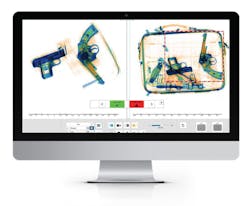Smiths Detection receives certification for its Automated Prohibited Items Detection System
Smiths Detection is proud to announce that its iCMORE Automated Prohibited Items Detection Systems (APIDS) algorithm has received local approval from the Netherlands’ National Coordinator for Security and Counter-terrorism (NCTV). The algorithm was rigorously tested, verified, and validated by the Netherlands Organisation for Applied Scientific Research (TNO), a European Civil Aviation Conference (ECAC)-certified test center.
iCMORE APIDS uses AI to identify a wide range of prohibited objects at airport security checkpoints, automating the detection of an extensive list of prohibited items while bags pass through CT security screening machines. The algorithm provides invaluable support to security screeners, enhancing security and creating a faster and more seamless experience for passengers.
Cymoril Metivier, Global Director Digital at Smiths Detection, said, “This certification reaffirms our commitment to being best in class, offering unmatched and proven capabilities that meet the highest certification standards—setting a new industry benchmark as the trusted partner for cutting-edge detection solutions. We remain committed to leading the way in delivering innovative and revolutionary solutions that elevate passenger safety and experience, ensure compliance with the highest and evolving security standards, and safeguard critical operations across the aviation industry.”
A letter received from Robert Moerland, Head of Civil Aviation Security at NCTV, states that the outcome of the national certification test shows the APIDS software met the strict criteria of APIDS standard 1 and the additional Dutch national detection requirements for APID software standard 1.
The approval confirms that the Smiths Detection APIDS algorithm meets both the EU APIDS Standard 1 requirements, as outlined in Attachment 12-M of EU Decision C(2015) 8005, and the additional Dutch national detection standards specified in the “national additional detection requirements for security equipment.”
